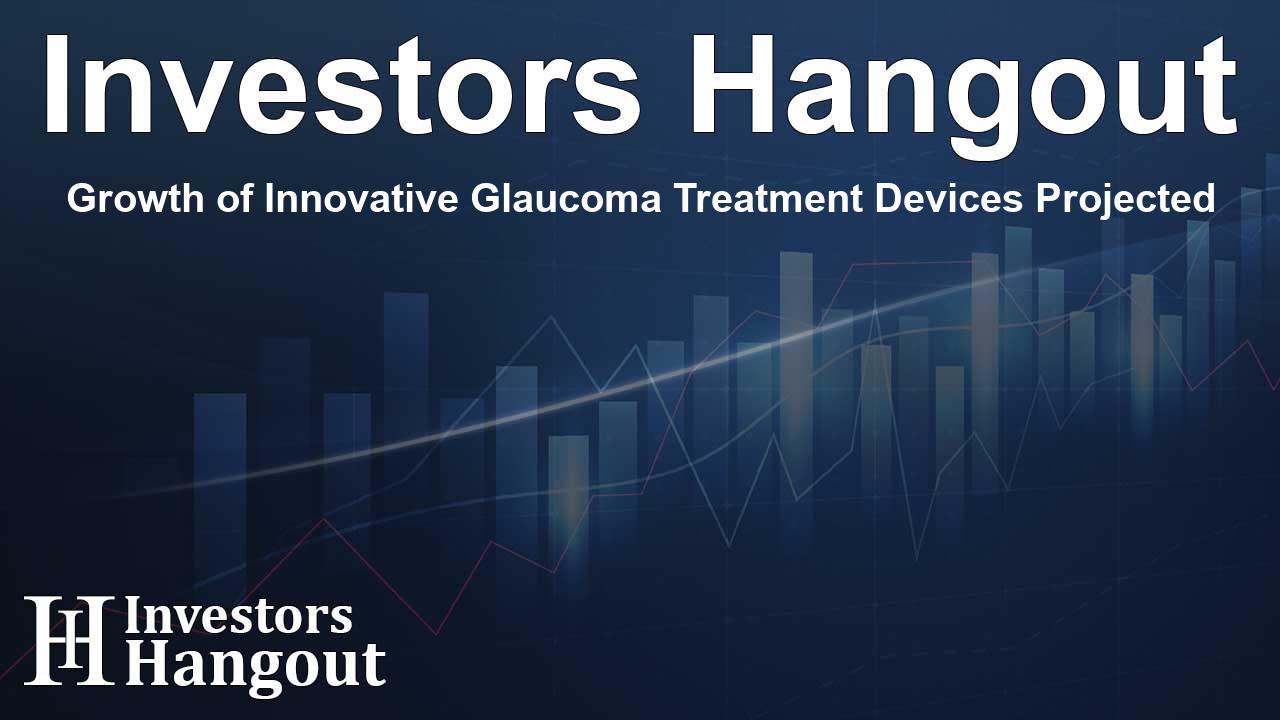Growth of Innovative Glaucoma Treatment Devices Projected

Market Growth and Innovations in Glaucoma Treatment
The Glaucoma Treatment Devices Market is witnessing a remarkable transformation, fueled by an increasing global prevalence of glaucoma and a growing emphasis on early diagnosis. The landscape of treatment is evolving rapidly, primarily due to advancements in minimally invasive surgical options. Innovations in surgical devices, alongside supportive public health initiatives, are pivotal in driving the steady growth of this market.
Market Overview and Projections
The estimated market value of glaucoma treatment devices stood at roughly USD 4.5 billion in 2024 and is expected to escalate to USD 7.2 billion by 2033, marking a solid compound annual growth rate (CAGR) of 6.5% from 2026 through 2033. This growth trajectory underscores the overarching demand for advanced surgical interventions and highlights improved access to ophthalmic care.
Key Market Drivers
- The global surge in glaucoma cases, driven by an aging population and rising awareness regarding eye health, is a critical driver of market expansion.
- With increasing healthcare investments, particularly in emerging economies, the market sees enhanced accessibility to innovative treatment options.
- The technological evolution related to minimally invasive glaucoma surgery (MIGS) devices is notably boosting adoption within both hospitals and outpatient clinics.
- North America continues to dominate this sector, but the Asia-Pacific region is projected to experience the highest growth due to escalating healthcare expenditure.
Technological Advancements to Look Out For
The field of glaucoma treatment is rapidly evolving with numerous technological breakthroughs. Noteworthy advancements include:
Minimally Invasive Glaucoma Surgery (MIGS)
- MIGS procedures are gaining popularity due to their promise of faster recovery times and fewer complications, helping improve patient outcomes significantly.
- Surgeons are increasingly favoring MIGS as a primary treatment option, particularly for patients who show insufficient response to conventional medication.
- Research into next-generation MIGS devices aims to match the anatomical needs of patients, underscoring the focus on personalized treatment approaches.
Innovations in Device Technology
- Smart implantable devices designed to monitor intraocular pressure in real-time offer exciting prospects for both physicians and patients.
- Advancements in laser technologies are presenting more effective alternatives to traditional surgical methods, enhancing treatment precision and patient safety.
- With the integration of artificial intelligence (AI) and the Internet of Things (IoT) in ophthalmic devices, the potential for improved management of glaucoma is significant.
Challenges Facing the Market
While the market presents vast opportunities, several challenges could hinder its growth:
High Costs and Limited Accessibility
- The high cost of advanced glaucoma devices, including MIGS, can make them unattainable for many patients, particularly in low-income regions.
- In many areas, inadequate insurance coverage and reimbursement policies further complicate access to necessary treatments.
- Hospitals might hesitate to invest in costly new surgical technologies without established financial incentives.
Regulatory and Awareness Barriers
- Delays associated with regulatory approval processes can affect the timely introduction of innovative devices, impacting smaller manufacturers adversely.
- Your average patient might lack awareness regarding glaucoma and its associated risks, leading to delayed diagnoses and treatment.
- Ongoing public health campaigns focusing on glaucoma awareness are vital in bridging these gaps but need to gain more traction.
Future Outlook and Conclusion
Looking ahead, the glaucoma treatment devices market reflects promising growth, driven by remarkable technological advancements and the ever-increasing prevalence of glaucoma. Stakeholders across the industry, from medical manufacturers to healthcare providers, are encouraged to remain informed of emerging trends and adapt strategically to seize upcoming opportunities.
Frequently Asked Questions
What factors are driving the growth of the glaucoma treatment devices market?
The growth is primarily driven by increasing glaucoma prevalence, advancement in treatment technologies, and greater awareness about early diagnosis.
How is minimally invasive surgery impacting the treatment of glaucoma?
Minimally invasive surgery provides quicker recovery and reduces complications, making it a preferred choice for surgeons treating glaucoma.
What are some challenges in the glaucoma treatment market?
High costs of devices, regulatory hurdles, and low patient awareness are significant challenges faced by the glaucoma treatment market.
Which regions are expected to lead in glaucoma device adoption?
North America leads the market, but the Asia-Pacific region is poised for rapid growth due to increasing healthcare investments.
What innovations can we expect in glaucoma treatment technology?
Technological innovations include smart implants for pressure monitoring and AI integration, enhancing the management of glaucoma.
About The Author
Contact Riley Hayes privately here. Or send an email with ATTN: Riley Hayes as the subject to contact@investorshangout.com.
About Investors Hangout
Investors Hangout is a leading online stock forum for financial discussion and learning, offering a wide range of free tools and resources. It draws in traders of all levels, who exchange market knowledge, investigate trading tactics, and keep an eye on industry developments in real time. Featuring financial articles, stock message boards, quotes, charts, company profiles, and live news updates. Through cooperative learning and a wealth of informational resources, it helps users from novices creating their first portfolios to experts honing their techniques. Join Investors Hangout today: https://investorshangout.com/
The content of this article is based on factual, publicly available information and does not represent legal, financial, or investment advice. Investors Hangout does not offer financial advice, and the author is not a licensed financial advisor. Consult a qualified advisor before making any financial or investment decisions based on this article. This article should not be considered advice to purchase, sell, or hold any securities or other investments. If any of the material provided here is inaccurate, please contact us for corrections.
